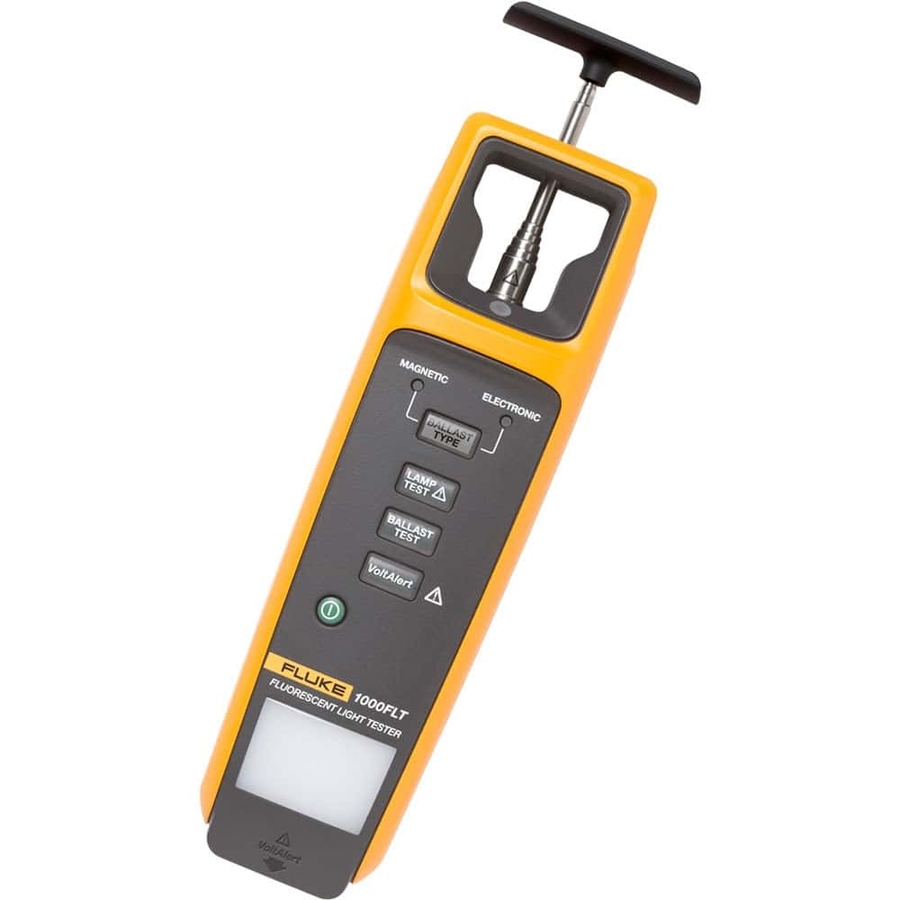Fluke 1000FLT Description
The Fluke 1000FLT Fluorescent Light Tester allows lamps to be tested easily by extending the rod extender and placing it on the lamp. With the light switched off, not operational or not fitted, when the lamp test button is pressed a 20kHz field is induced into the lamp, exciting it and causing a partial glow. This is useful for determining if any of the gasses have leaked from the lamp on existing fitted lamps or on new lamps (before fitting).
If the lamp is not lighting it may be due to a faulty ballast. The ballast test checks for a presence of the voltage at each end of the lamp to see if the filament is receiving a voltage from the ballast. If the cathode is not glowing, the rod extender is placed against each end of the lamp to detect whether it is receiving a voltage from the ballast.
The non-contact voltage indication can be used by reversing the instrument. The sensing circuit in in the base of the instrument and when placed in close proximity to a live conductor a solid red lights indicates that voltage has been found. The pin continuity test at the bottom of the tester allows the lamp to be easily connected. A continuity test checks that the cathode on that end of lamp isn’t defective by having a high resistance. This is particularly handy for checking lamps before installation. The ballast-type test can be used to determine whether the lamp has an older magnetic ballast or a more modern electronic ballast which is more energy efficient and reduce flicker and noise. The ballast-type button is pressed and the relevant light illuminates when the instrument is pointed at and is within 3 meters of the fitting. This is useful in determining whether the ballast or even light fitting should be updated.






